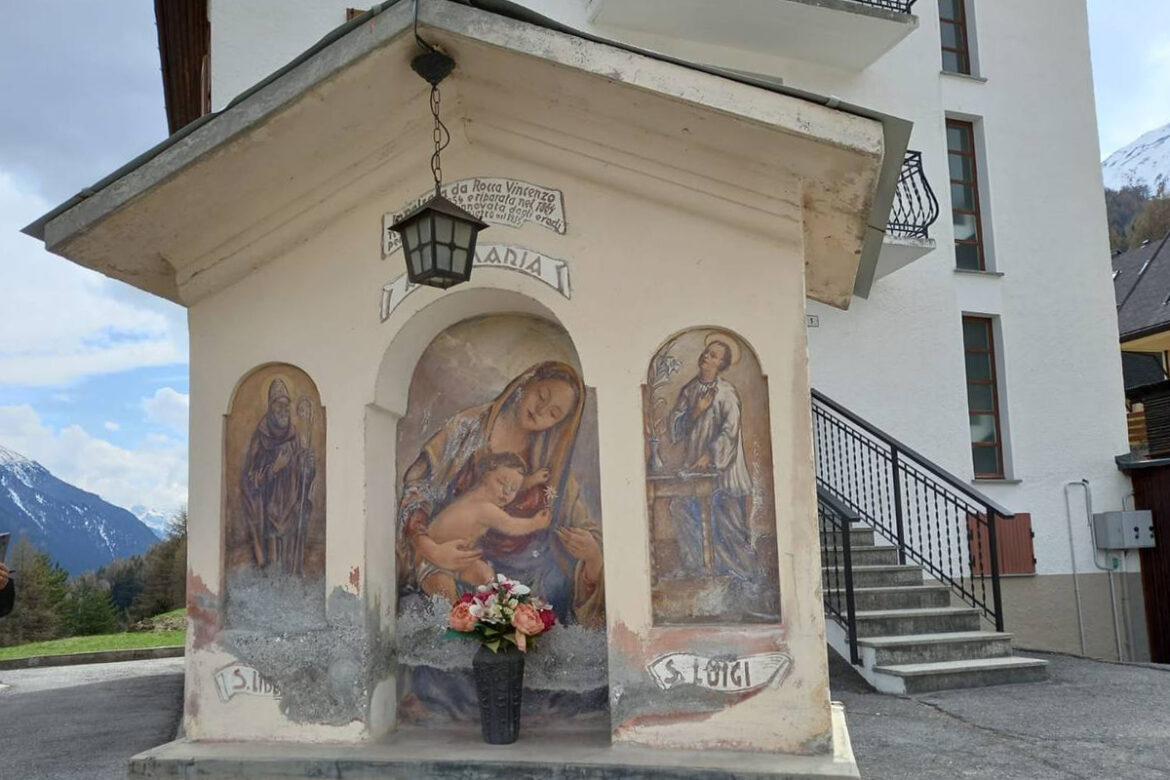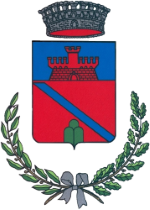
Erected by Vincenzo Rocca in 1854, repaired in 1864, and renewed out of devotion by the heirs of Pietro Casa in 1955 (Pietro Casa was Vincenzo Rocca’s son-in-law, having married his daughter Maria Apollonia). This suggests that the chapel may have been the result of a vow made so that the couple could have children. In fact, from the year of their marriage in 1953 until 1956, no heirs were born, and the firstborn survived only a few minutes. Afterward, they had a total of 7 children, with another dying during childbirth. Also known as the “Santela de Belòt” (surname of a family from Valdidentro who settled in Oga in the seventeenth century). The toponym Belòt is also linked to a legend: it is said that by pouring linseed oil into the meadows of the Belòt basin, it would flow downstream to the area called Didalènt.
In the past, it was a destination for processions during Rogation Days (early morning processions where the community prayed and invoked divine help to protect the countryside from adverse weather conditions and ensure a good harvest, often sprinkling holy water to bless meadows and fields). The chapel was restored and repainted in 1955 by the painter Leonardo Leonardon. It depicts a Madonna and Child between St. Louis and St. Liberato (or Liberale), with St. Roch depicted on one side.
- St. Louis, the Jesuit, sacrificed his young life to serve others and immediately became an exemplary model of holiness for the youth. Born into privilege, he presented himself to the world with humble demeanor, holding a symbol not of death but of peace, innocence, and purity (the lily). He is depicted with traditional iconographic features: simple cassock, clean-shaven face, a radiant halo, and a calm gaze.
- St. Roch, the widespread devotion to him began between the 15th and 16th centuries. Due to his hagiography (he contracted the plague while caring for the sick and was cured with the help of a faithful dog that brought him bread to eat), he is invoked for protection against plagues from which he survived. The fresco is heavily damaged: one can discern the staff with a bag hanging from its end to carry water, and his thigh is uncovered, revealing the plague sore. His attire is notably a tunic, covered only by a kind of jacket.
- St. Liberato, there is no other saint of this kind in Valtellina or Lombardy, but in Oga, there is a painting (in the sacristy) and a small shrine dedicated to him, although the two depictions do not correspond in aesthetic canons. St. Liberato is widespread in the northeast Veneto (patron saint of Treviso), while St. Liberale is rare.






